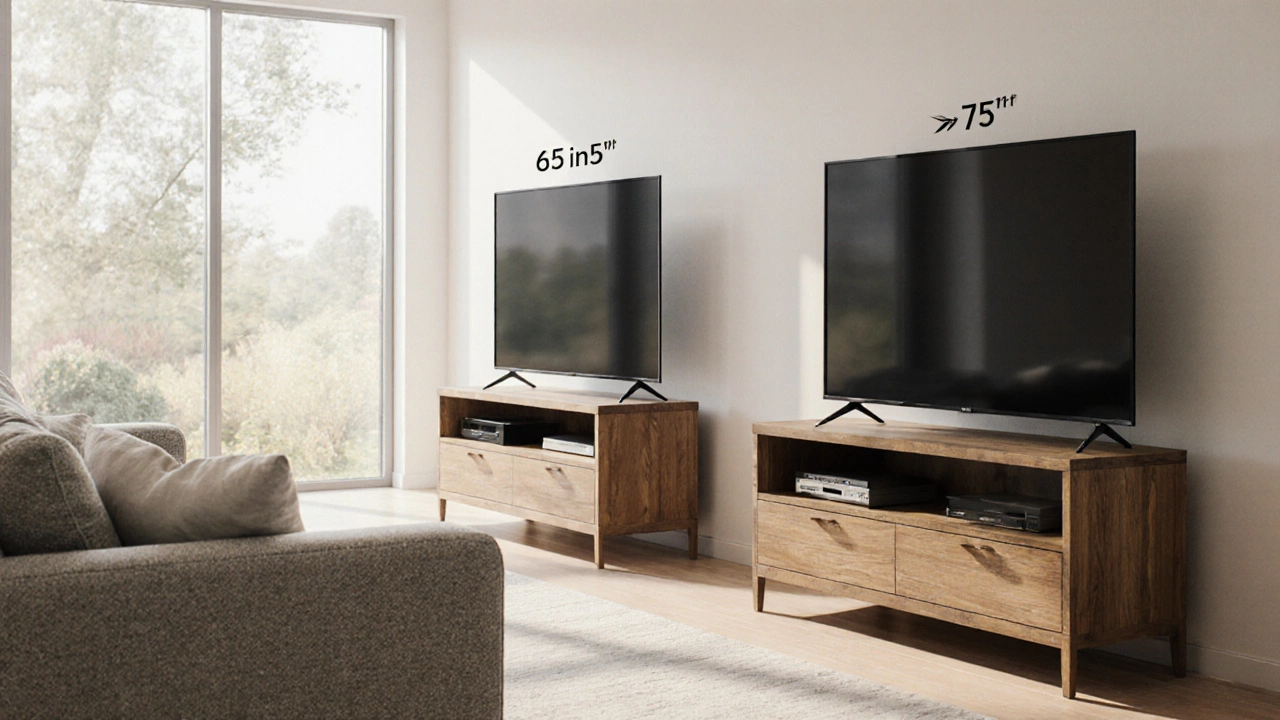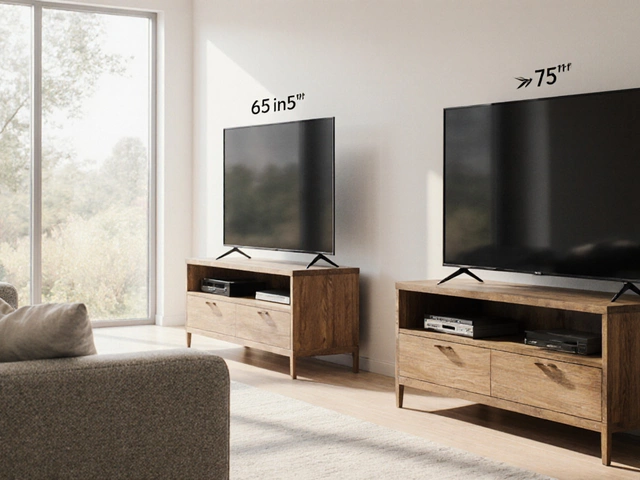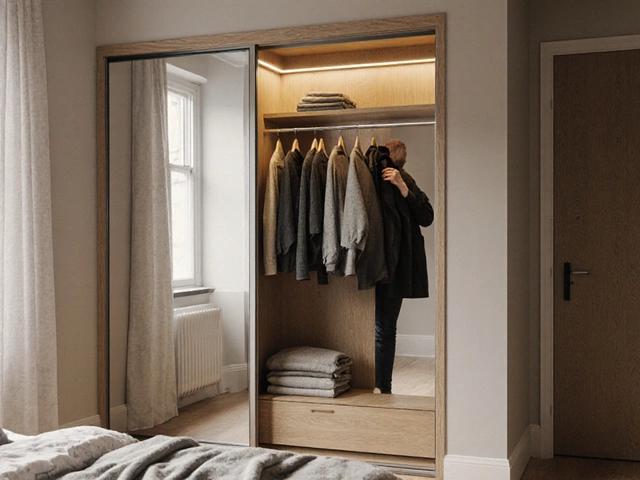TV Stand Fit Calculator
Check Your TV Stand Compatibility
Determine if your current stand can safely support a 75-inch TV based on width and weight requirements.
When you’re shopping for a new TV, the difference between a 65-inch and a 75-inch model isn’t just about screen size-it’s about how much space it takes up in your room, whether it fits your stand, and how far back you need to sit to avoid eye strain. If you’re trying to decide between these two sizes, you’re not just choosing a bigger picture-you’re choosing a bigger footprint. Let’s break down exactly how much bigger a 75-inch TV really is compared to a 65-inch one, and what that means for your setup.
What Does TV Size Actually Mean?
TV sizes are measured diagonally, from one corner of the screen to the opposite corner. That means a 65-inch TV has a diagonal screen measurement of 65 inches, and a 75-inch TV is 10 inches longer diagonally. But that 10-inch difference isn’t just a line-it’s a big jump in surface area. A 75-inch TV has about 34% more screen area than a 65-inch model. That’s not a small upgrade. It’s like going from a standard laptop screen to a large desktop monitor.
Here’s the math: a 65-inch TV has a screen area of roughly 1,783 square inches. A 75-inch TV? About 2,393 square inches. That’s an extra 610 square inches of display-nearly the size of a large pizza. If you’re used to watching a 65-inch TV and switch to a 75-inch, you’ll notice the difference immediately, especially during movies or sports.
Physical Dimensions: Width, Height, and Depth
Screen size isn’t the whole story. The actual TV’s width, height, and depth matter when it comes to fitting it on a stand or mounting it on the wall. Most modern TVs have slim bezels, but the overall dimensions still grow noticeably between these two sizes.
For a typical 65-inch TV:
- Width: around 57 inches
- Height: around 33 inches
- Depth: 2 to 4 inches (without stand)
For a typical 75-inch TV:
- Width: around 66 inches
- Height: around 38 inches
- Depth: 2 to 5 inches (without stand)
So the 75-inch TV is about 9 inches wider and 5 inches taller than the 65-inch model. That’s almost a foot of extra space needed on your TV stand or wall. If your current stand is designed for a 65-inch TV, it might be too narrow. A stand that’s 60 inches wide will leave the 75-inch TV hanging over the edges-unstable and unsafe.
TV Stand Requirements: What Fits What?
Not all TV stands are created equal. Many stands list a maximum TV size they can support. If your stand says "fits up to 65 inches," that doesn’t mean it can handle a 75-inch TV-even if the weight is fine. The width is the real issue.
Most manufacturers recommend a stand width that’s at least 80% of the TV’s width. So for a 65-inch TV (57 inches wide), you’d want a stand at least 46 inches wide. For a 75-inch TV (66 inches wide), you need a stand at least 53 inches wide. That’s a 7-inch difference in minimum stand width. If you’re upgrading from a 65 to a 75, your current stand likely won’t cut it.
Also check the weight limit. A 65-inch TV typically weighs between 40 and 55 pounds. A 75-inch model? It’s usually 60 to 80 pounds. That’s a 20- to 30-pound increase. If your stand is rated for 60 pounds, it might struggle with a heavier 75-inch TV.
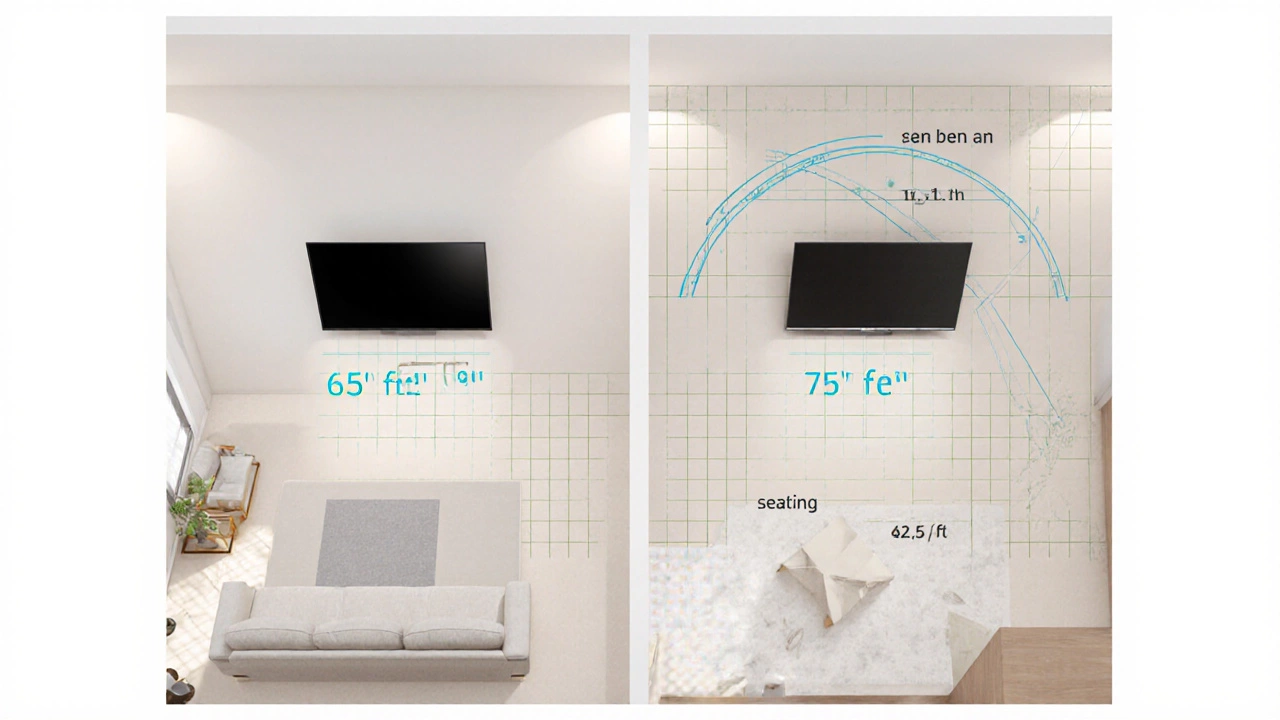
Wall Mounting: Is Your Wall Ready?
If you’re planning to mount your TV, the same rules apply. A 75-inch TV needs more wall space and stronger mounting hardware. The VESA mount pattern-the screw hole layout on the back of the TV-is larger on a 75-inch model. Most 65-inch TVs use a 400x400mm or 600x400mm pattern. A 75-inch TV often uses 600x400mm or even 800x400mm. Your existing wall mount might not support it.
Also, the center of the screen should be at eye level when seated. A taller TV means the mount needs to be installed higher. If your current mount is already at the ideal height for a 65-inch TV, adding a 75-inch model might put the bottom of the screen too high, forcing you to look up. That’s uncomfortable for long viewing sessions.
Viewing Distance: How Far Should You Sit?
Big TV doesn’t mean you can sit closer. In fact, the opposite is true. The recommended viewing distance for a 65-inch TV is 8 to 10 feet. For a 75-inch TV, it’s 10 to 12 feet. If you’re sitting too close, you’ll see the pixels and feel overwhelmed by the screen. If you’re in a small living room, going from a 65 to a 75 might mean you need to rearrange your furniture.
There’s a simple rule: multiply the screen size by 1.5 to get the minimum viewing distance in feet. So for a 65-inch TV: 65 x 1.5 = 97.5 inches (about 8 feet). For a 75-inch TV: 75 x 1.5 = 112.5 inches (about 9.4 feet). For the best experience, aim for 2x the screen size: 130 inches (10.8 feet) for 65-inch, 150 inches (12.5 feet) for 75-inch.
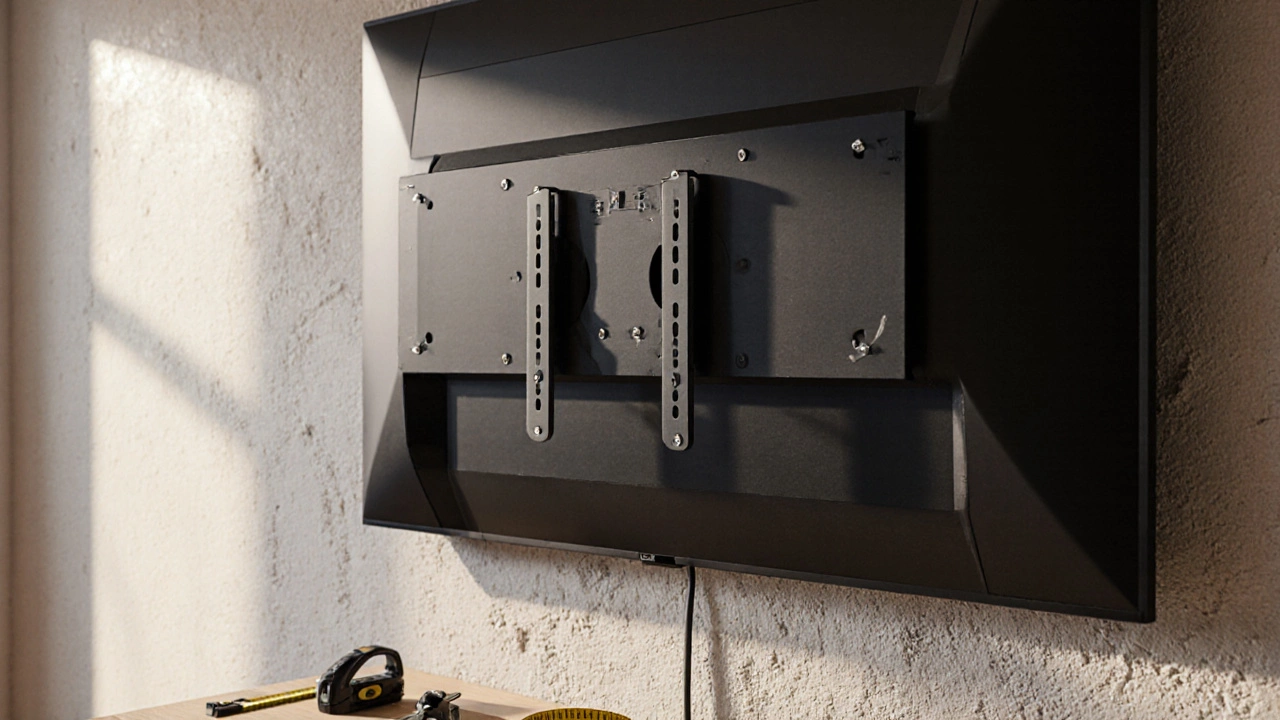
Is the Upgrade Worth It?
Is a 75-inch TV worth the extra space, cost, and potential need for a new stand? If you have the room and you’re watching movies, sports, or gaming, the answer is usually yes. The immersion is real. A 75-inch TV makes you feel like you’re inside the action. The difference isn’t subtle-it’s dramatic.
But if your room is small, your current stand is too narrow, or you can’t move your seating farther back, then the upgrade might cause more problems than it solves. You could end up with a TV that doesn’t fit, forces you to sit too close, or requires expensive new hardware.
Think of it like upgrading from a sedan to an SUV. You get more space, more power, more presence-but you also need a bigger garage, more fuel, and maybe a different parking spot.
What to Do If Your Stand Won’t Fit
If you’ve already bought a 75-inch TV and realized your stand is too small, here are your options:
- Buy a new TV stand designed for 75-inch models. Look for ones labeled "fits up to 80 inches" to be safe.
- Use a wall mount. Make sure the mount is rated for the weight and VESA pattern of your new TV.
- Use a media console with open shelving underneath. Some consoles are wide enough and have sturdy frames.
- Don’t force it. A TV that hangs over the edge is a safety hazard. Don’t risk it.
Many people assume bigger TVs are just a luxury. But the real challenge isn’t the price-it’s the space. A 75-inch TV demands more from your room, your stand, and your setup. Plan ahead. Measure twice. Buy once.
Final Tip: Measure Before You Buy
Before you click "Buy Now," grab a tape measure. Measure the width of your current TV stand. Measure the distance from your couch to the wall. Check your wall mount’s VESA pattern. Write it all down. Then compare it to the specs of the 75-inch TV you’re considering.
Don’t assume your 65-inch setup will work. It probably won’t. But if you plan right, a 75-inch TV can transform your viewing experience-without turning your living room into a cluttered mess.
